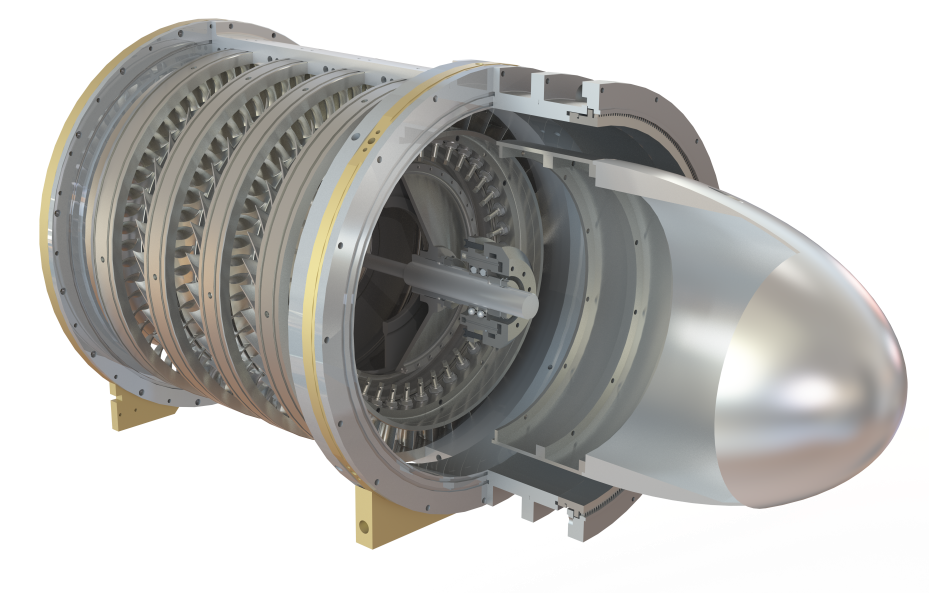Purdue 3-Stage Axial Compressor (P3S)
|
The three-stage axial research compressor facility houses two different compressor designs, based on the rear stages of a Rolls-Royce Indianapolis high-pressure compressor (HPC) core of a gas-turbine engine. The compressors are rescaled while maintaining engine-representative Reynolds and Mach numbers. The original compressor, PAX100, has been the primary workhorse of the facility throughout the last decade and reaches a design operating speed of 5,000 rpm. A new design effort, identified as PAX200, incorporates advanced blade design technologies, higher pressure ratios, and increased rotational speeds up to 8,250 rpm. Since summer of 2016, these modifications have allowed for higher TRL research in the Purdue three-stage compressor facility. Current research work with the P3S compressor is funded by Rolls-Royce and the GUIde 6 Consortium. |
|
Current work: Advance Technology Demonstrator
Grand Challenges in Turbomachinery Forced Response
|
|
Pressure taps along the casing and between each rotor and stator row provide information about pressure variation through the flow passage. Multi-element total temperature and total pressure rakes yield performance metrics for the overall compressor, individual blade rows, and stage-by-stage analyses. Circumferential and Radial Traversing Independent, circumferentially-indexable vane rows facilitate pitch-wise measurements and vane clocking studies. Additionally, the ability to perform radial traverses with single pressure, temperature, or hotwire probes allows for higher resolution measurements within each blade span. Particle Image Velocimetry (PIV) A novel PIV technique has been developed in the embedded stage by introducing incident laser light through the same window used for imaging the flow field. Using this technique, intrusive periscope devices are not required. Ultimately, three-component velocity fields are reconstructed using several imaging cameras through volumetric and tomographic techniques. Capacitance Probes Capacitance probes are used to monitor real-time rotor tip clearances. This capability is valuable for health monitoring, but these real-time clearance measurements also reveal tip clearance effects at different speeds, loading conditions, and for different ambient conditions. These data are imperative for future one-to-one comparisons with computational simulations. Hotwire Anemometry A unique, dedicated hotwire calibration jet facility allows up to three-dimensional sensor calibrations with precision control of velocity, temperature, and density. Nonintrusive Stress Measurement System (NSMS) Optical probes mounted on the compressor casing acquire blade arrival timing information to detect amplitude and phase vibration for each rotor blade. Flow-Visualization Powder-paint flow visualization is used to highlight the development of stator corner separations and endwall flows in the compressor. High Frequency Pressure Measurements High frequency pressure measurements enable identification of flow phenomena such as rotor tip leakage flows and embedded rotor vibration. |
Theses
|
 Research Objectives
Research Objectives Specific Instrumentation Capabilities
Specific Instrumentation Capabilities